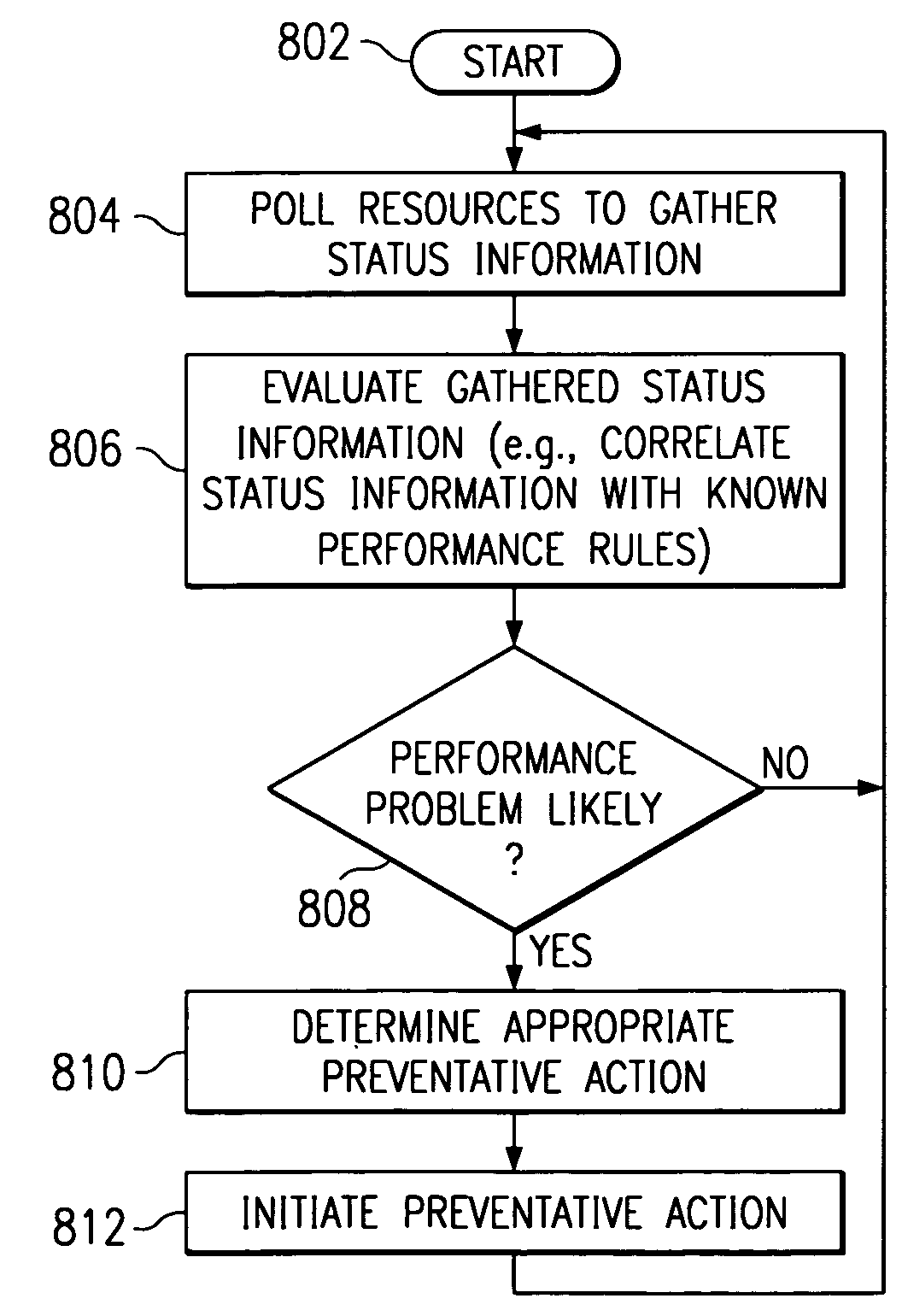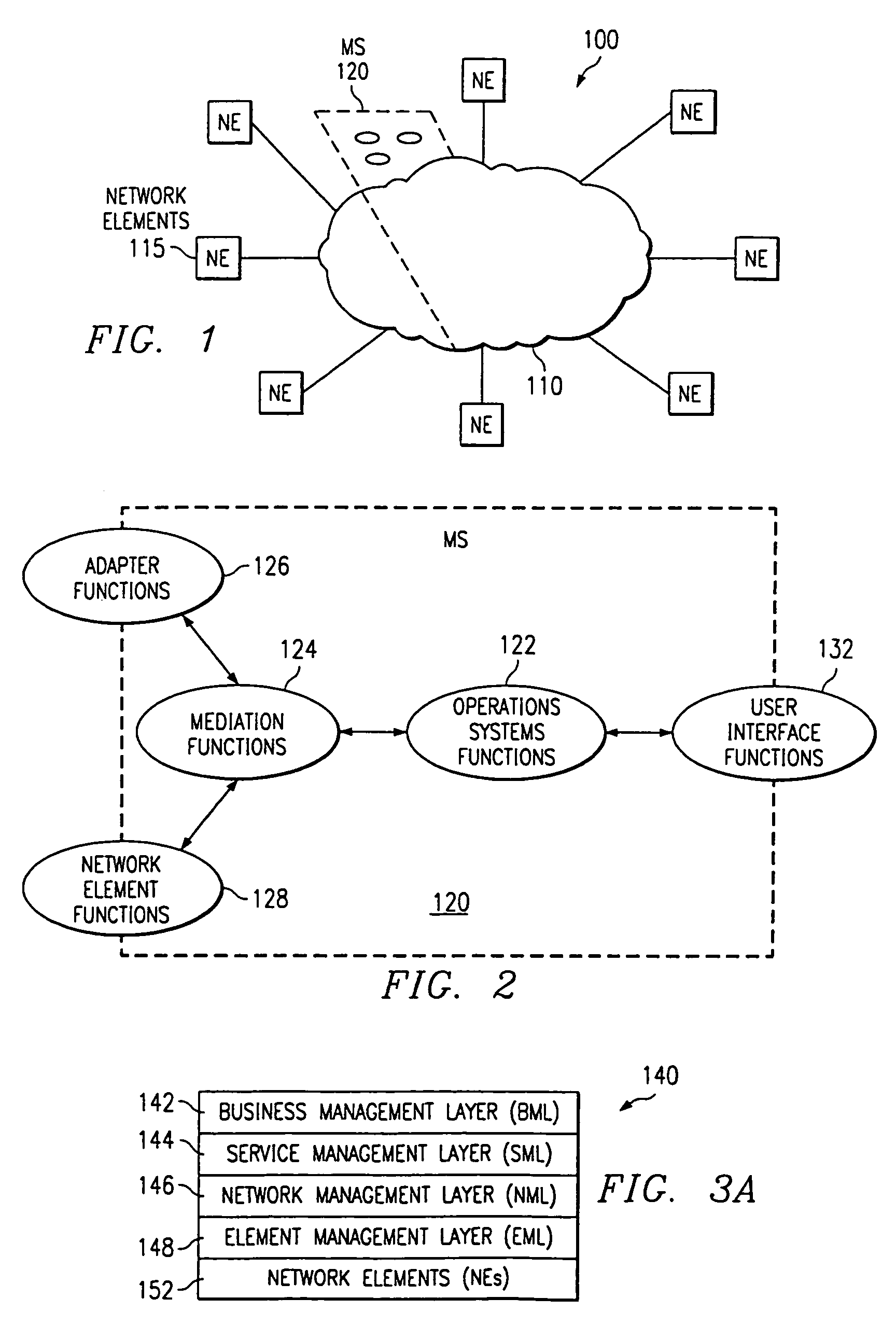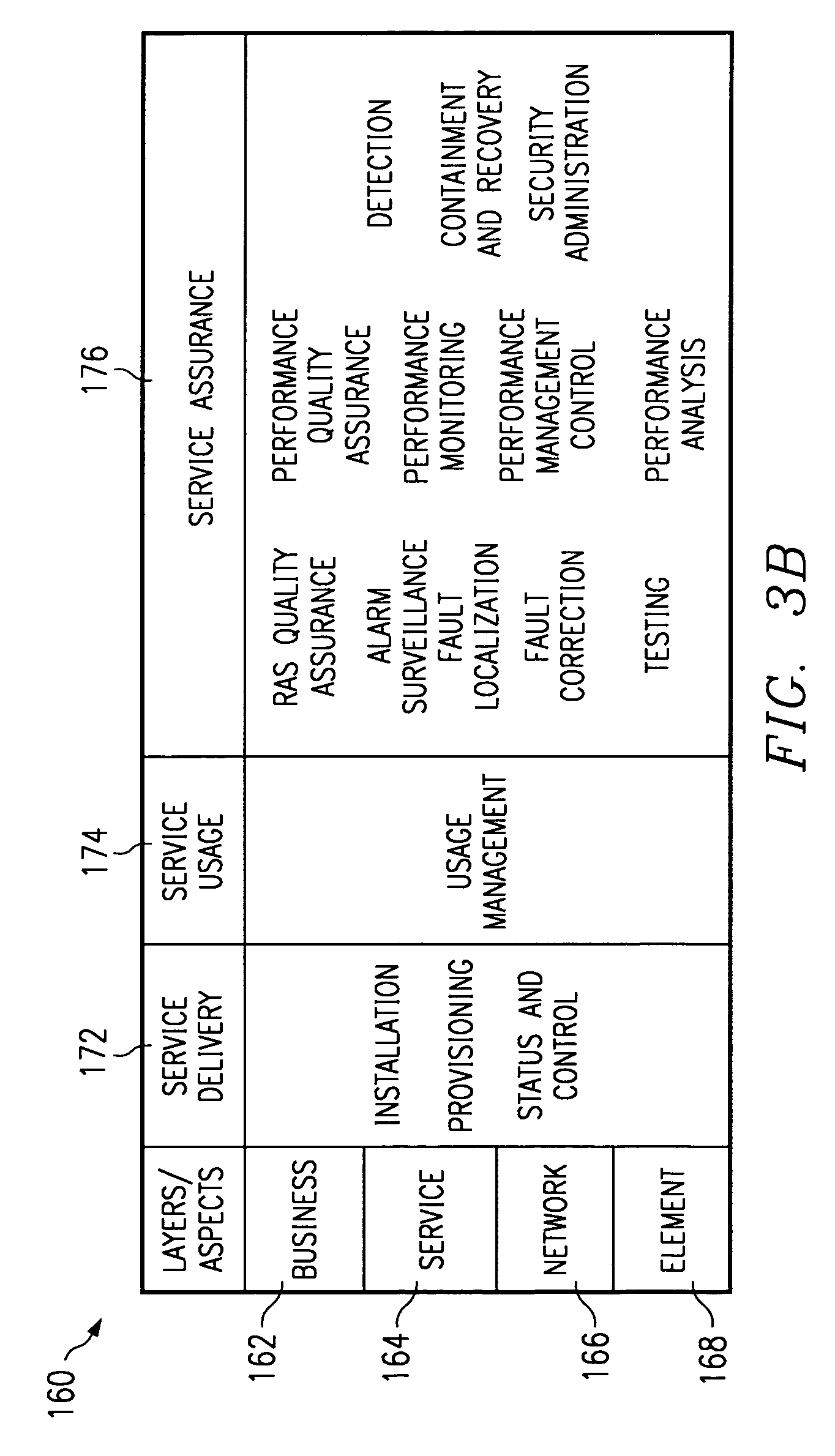However, such NMSs / OSSs are generally based on older technologies, which poorly integrate disparate network elements and associated
Element Management Systems (EMSs).
Many other companies use other types of EMSs, NMSs and OSSs that are not scalable, cannot be easily interfaced with disparate network elements, and require costly
programming while offering limited features and flexibility.
For instance, as the network is in use over time, various system resources begin being consumed.
Furthermore, various peculiarities (e.g., faults) in the system may be detected.
For example, a
network management system (NMS) may detect that resources within the network are being consumed in an inappropriate manner.
Various other undesirable characteristics of a system may be detected upon their occurrence.
For example, failure of all or a portion of a network or an element of the network may be detected upon such failure.
Generally, problems in computer networks of the prior art are detected once they occur, and only then is an attempt made to correct or otherwise respond to such problems.
NMSs of the prior art typically do not attempt to predict whether the network itself or some element of the network is likely to fail or whether performance of the network or some element thereof is likely to be hindered (e.g., slow to an undesirable performance level) while the network is in use.
That is, prior art EMSs / NMSs / OSSs typically fail to recognize conditions that indicate that a failure or otherwise poor performance of the network or an element of the network is likely to occur in the near future.
Furthermore, such EMSs / NMSs / OSSs not only fail to predict a likely failure or poor performance, but also fail to take responsive actions to prevent such a problem.
While prior art EMSs / NMSs / OSSs may provide warnings of an inappropriate or dangerous condition in the network (e.g., fault messages), EMSs / NMSs / OSSs of the prior art fail to detect a cause of such a problem or predict a solution to deter such a problem.
Furthermore, before such an inappropriate or dangerous condition occurs within a network (or element thereof), EMSs / NMSs / OSSs of the prior art fail to predict, based on evaluation of the network (or element thereof), that such an inappropriate or dangerous condition is likely to occur in the future.
Accordingly, prior art EMSs / NMSs / OSSs fail to predict or recognize potential problems within the network, and further fail to take preventative action in an attempt to prevent such a problem from occurring.
That is, prior art EMSs / NMSs / OSSs fail to recognize potential problems within a network and take appropriate preventative action(s) in an attempt to avoid such problems.
Typically, once a warning, such as a fault message, is provided in prior art systems, the performance of the network is already negatively affected.
Generally, in prior art networks, once a problem, such as a failure or other type of inappropriate condition is detected in the network, reliance is placed on an engineer or
technician to inspect and service the network.
Such a
technician can perform some limited analysis of the network in an attempt to detect the source of the problem, but the
technician will not necessarily find the source of a problem.
In fact, when the technician actually services the network, conditions in the network may have changed such that the technician fails to detect that a problem even exists within the network.
Accordingly, difficulty exists in prior art networks in determining whether the network (or some element thereof) is likely to fail during future use of the network and to prevent such a failure.
Therefore, prior art EMSs / NMSs / OSSs exist which can monitor a network to know when the network (or some element thereof) fails, but such EMSs / Ss / OSSs fail to provide a prediction of when the network (or some element thereof) is about to fail because, for example, certain resources being utilized at an inappropriate rate or some other factors being detected which are indicative of a problem existing.
However, networks of the prior art have generally not been implemented to monitor the system which manages the network elements (i.e., the EMS / NMS / OSS) to predict performance problems within the network.
Additionally, such intelligent agents provide very limited, focused monitoring, in that they are typically implemented to monitor only a specific
network element.
Thus, overall problems of a network may not be detected or prevented by such intelligent agents.
That is, network problems of an entire network, which may or may not involve a specific
network element being monitored by an
intelligent agent, are generally not predicted or prevented by such intelligent agents.
Furthermore, such intelligent agents that monitor a specific
network element may have a skewed view of whether a problem exists.
The
intelligent agent is typically unable to determine the effect a condition detected within its associated network element may or may not have on other elements or the network as a whole.
Again, the
intelligent agent is typically unable to determine the effect a condition detected for its associated network element may or may not have on other elements or the network as a whole.
 Login to View More
Login to View More  Login to View More
Login to View More 


